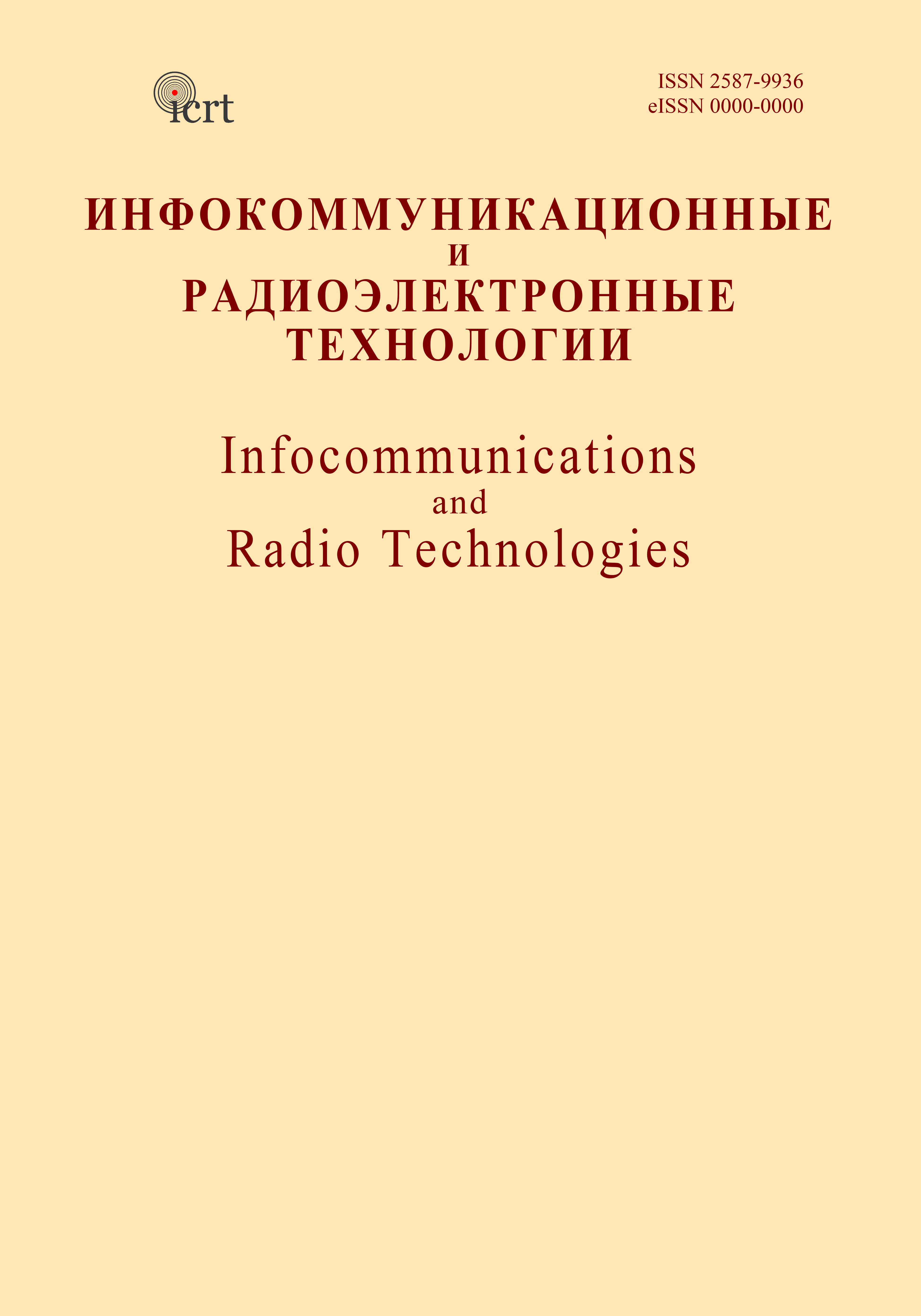Nauchni, Simferopol, Russian Federation
Town Scientific, Simferopol, Russian Federation
Moscow, Moscow, Russian Federation
Based on long-term monitoring of the water vapor maser at 22.2 GHz from early 2019 to March 2021, the most powerful flare event in the entire history of observations was recorded in the protostellar system IRAS 16293-2422 at a velocity of about –1.5 km s–1, lasting of about two years. The maser emission came from the largest structure of maser spots, the high density of which created their partial overlap in time. The total number of individual flares of the water maser reached ten. Due to the high detail of the data obtained, recorded at intervals of 1–2 days, new unique results were obtained. The existence of such a complex configuration of emitting maser spots with very similar radial velocities located on the observer’s line of sight was confirmed for the first time. It was possible to establish that the masers of powerful flares were in an un-saturated state due to the cascade pumping of several masers on the observer’s line of sight. New important parameters of water masers have been obtained, and an assumption has been made about their localization in the gas-dust structure IRAS 16293-2422.
star formations, stars with exoplanet, molecules, radio lines, water masers
1. X. Chen et al., “SMA Observations of Class 0 Protostars: a High Angular Resolution Survey of Protostellar Binary Systems,” The Astrophysical Journal, vol. 768, no. 2, p. 110, Apr. 2013, doi:https://doi.org/10.1088/0004-637x/768/2/110.
2. J. J. Tobin et al., “The VLA/ALMA Nascent Disk and Multiplicity (VANDAM) Survey of Orion Protostars. II. A Statistical Characterization of Class 0 and Class I Protostellar Disks,” The Astrophysical Journal, vol. 890, no. 2, p. 130, Feb. 2020, doi:https://doi.org/10.3847/1538-4357/ab6f64.
3. S. A. Dzib et al., “A revised distance to IRAS 16293-2422 from VLBA astrometry of associ-ated water masers,” Astronomy & Astrophysics, vol. 614, p. A20, Jun. 2018, doi:https://doi.org/10.1051/0004-6361/201732093.
4. C. K. Walker, C. J. Lada, E. T. Young, P. R. Maloney, and B. A. Wilking, “Spectroscopic evidence for infall around an extraordinary IRAS source in Ophiuchus,” The Astrophysical Journal, vol. 309, p. L47, Oct. 1986, doi:https://doi.org/10.1086/184758.
5. K. M. Menten, E. Serabyn, R. Guesten, and T. L. Wilson, “Physical conditions in the IRAS 16293-2422 parent cloud,” Astronomy & Astrophysics, vol. 177, pp. L57-L60, 1987.
6. A. I. Sargent and S. Beckwith, “Kinematics of the circumstellar gas of HL Tauri and R Monocerotis,” The Astrophysical Journal, vol. 323, p. 294, Dec. 1987, doi:https://doi.org/10.1086/165827.
7. P. Bjerkeli et al., “Water around IRAS 15398-3359 observed with ALMA,” Astronomy & Astrophysics, vol. 595, p. A39, Oct. 2016, doi:https://doi.org/10.1051/0004-6361/201628795.
8. T. Hirota et al., “Disk-driven rotating bipolar outflow in Orion Source I,” Nature Astronomy, vol. 1, no. 7, Jun. 2017, doi:https://doi.org/10.1038/s41550-017-0146.
9. A. Wootten, “The Duplicity of IRAS 16293-2422: A Protobinary Star?,” The Astrophysical Journal, vol. 337, p. 858, Feb. 1989, doi:https://doi.org/10.1086/167156.
10. A. Wootten and R. B. Loren, “L1689N - Misalignment between a bipolar outflow and a magnetic field,” The Astrophysical Journal, vol. 317, p. 220, Jun. 1987, doi:https://doi.org/10.1086/165270.
11. H. Imai et al., “Astrometry of H2O Masers in Nearby Star-Forming Regions with VERA I. IRAS 16293-2422 in ρ Oph East,” Publications of the Astronomical Society of Japan, vol. 59, no. 6, pp. 1107-1113, Dec. 2007, doi:https://doi.org/10.1093/pasj/59.6.1107.
12. N. S. Nesterov, A. E. Volvach, I. D. Strepka et al., “22 GHz Radiometer for International VLBI Station SYMEIZ,” Radio Physics and Radio Astronomy, vol. 5, no. 3, pp. 320-322, 2000. (In Russ.).
13. P. Goldreich and J. Kwan, “Astrophysical Masers.IV. Line Widths,” The Astrophysical Journal, vol. 190, p. 27, May 1974, doi:https://doi.org/10.1086/152843.
14. L. N. Volvach et al., “Powerful bursts of water masers towards G25.65+1.05,” Monthly Notices of the Royal Astronomical Society: Letters, vol. 482, no. 1, pp. L90-L92, Oct. 2018, doi:https://doi.org/10.1093/mnrasl/sly193.
15. A. E. Volvach, L. N. Volvach, and M. G. Larionov, “Unusually powerful flare activity of the H2O maser feature near a velocity of −60 km s−1 in W49N,” Monthly Notices of the Royal Astronomical Society: Letters, vol. 496, no. 1, pp. L147-L151, Jun. 2020, doi:https://doi.org/10.1093/mnrasl/slaa104.
16. L. N. Volvach et al., “Flaring water masers associated with W49N,” Astronomy & Astrophysics, vol. 628, p. A89, Aug. 2019, doi:https://doi.org/10.1051/0004-6361/201935521.
17. A. E. Volvach, L. N. Volvach, and M. G. Larionov, “Composite powerful short flare of water maser emission in IRAS 16293-2422,” Monthly Notices of the Royal Astronomical Society: Letters, vol. 507, no. 1, pp. L52-L56, Aug. 2021, doi:https://doi.org/10.1093/mnrasl/slab096.
18. V. Strel’nitskiy, “Collision-collision pumping of cosmic masers,” Soviet Ast. Let, vol. 6. pp. 196-199, 1980.
19. A. Palma, S. Green, D. J. Defrees, and A. D. McLean, “Collisional excitation of interstellar water,” The Astrophysical Journal Supplement Series, vol. 68, p. 287, Oct. 1988, doi:https://doi.org/10.1086/191289.
20. I. Shmeld, V. Strel’nitsky, and V.Muzulev, “Collisional pumping of a cosmic H2O maser in a shock wave,” Soviet Ast, vol. 20, pp. 411-418, 1976.
21. N. D. Kylafis and C. Norman, “On pumping astronomical masers,” The Astrophysical Journal, vol. 300, p. L73, Jan. 1986, doi:https://doi.org/10.1086/184606.
22. S. B. Pikel’ner and V. S. Strel’nitskiy, “Models of cosmic maser sources,” Astrophysics and Space Science, vol. 39, no. 2, pp. L19-L24, Feb. 1976, doi:https://doi.org/10.1007/bf00648350.
23. V. S. Strel’nitsky and R. A. Sunjaev, “Pumping of Strong H2O Cosmic Masers,” Astron. Zh., vol. 49, pp. 704-711, 1972.
24. C. Norman and J. Silk, “Interstellar bullets - H2O masers and Herbig-Haro objects,” The Astrophysical Journal, vol. 228, p. 197, Feb. 1979, doi:https://doi.org/10.1086/156836.
25. Strelnitskii V. S. On the nature of the strong cosmic H2O masers // MNRAS. 1984. Vol. 207. P. 339-354.
26. Y. Itikawa, “Rotational Transition in an Asymmetric-Top Molecule by Electron Collision: Applications to H2O and H2CO,” Journal of the Physical Society of Japan, vol. 32, no. 1, pp. 217-226, Jan. 1972, doi:https://doi.org/10.1143/jpsj.32.217.
27. V. Strel’nitsky, J. Alexander, S. Gezari, B. P. Holder, J. M. Moran, and M. J. Reid, “H2O Masers and Supersonic Turbulence,” The Astrophysical Journal, vol. 581, no. 2, pp. 1180-1193, Dec. 2002, doi:https://doi.org/10.1086/344244.
28. V. S. Strel’nitsky, “On the nature of the strong cosmic H2O masers,” Monthly Notices of the Royal Astronomical Society, vol. 207, no. 2, pp. 339-354, Mar. 1984, doi:https://doi.org/10.1093/mnras/207.2.339.










